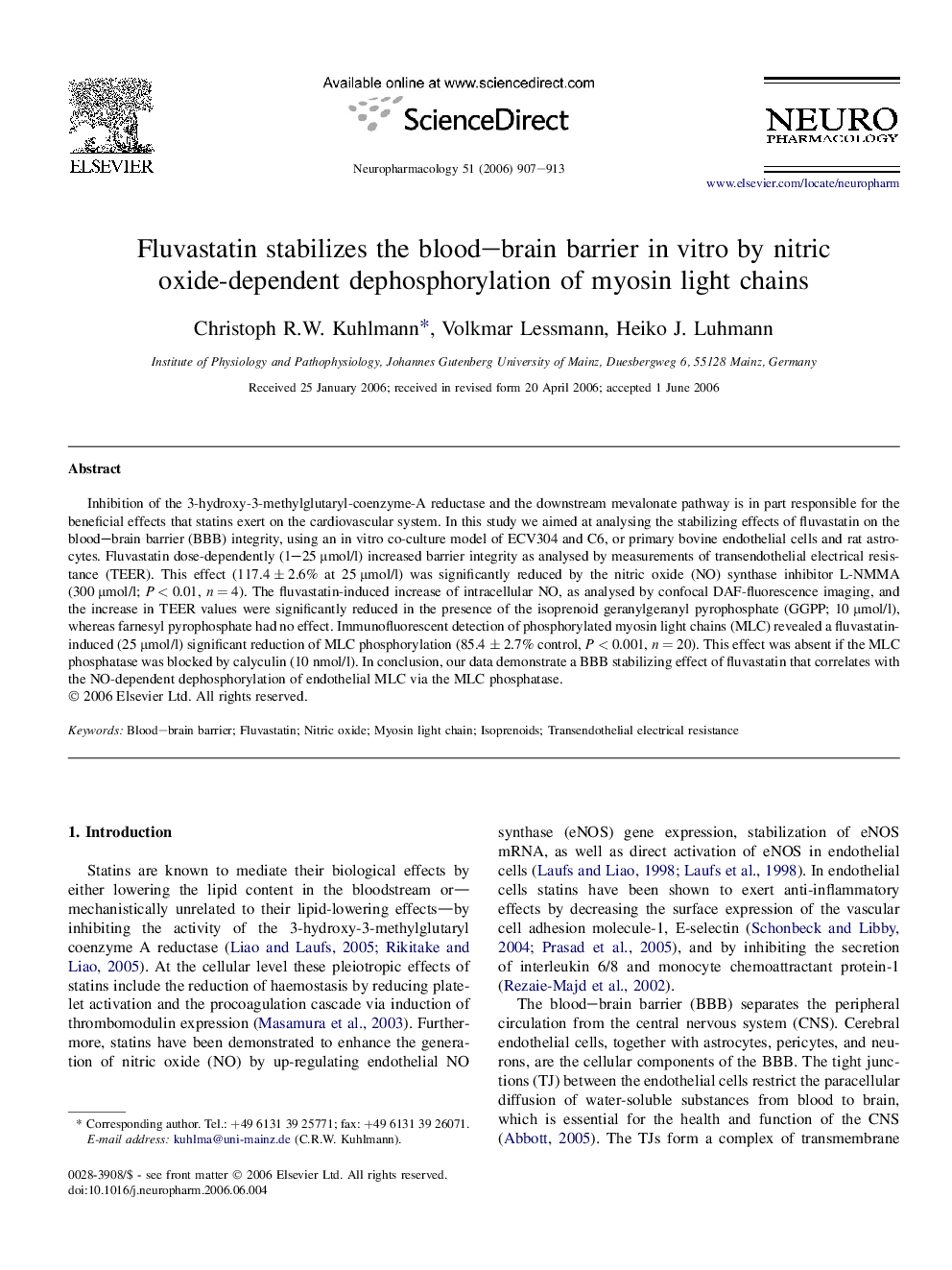| Article ID | Journal | Published Year | Pages | File Type |
|---|---|---|---|---|
| 2495110 | Neuropharmacology | 2006 | 7 Pages |
Inhibition of the 3-hydroxy-3-methylglutaryl-coenzyme-A reductase and the downstream mevalonate pathway is in part responsible for the beneficial effects that statins exert on the cardiovascular system. In this study we aimed at analysing the stabilizing effects of fluvastatin on the blood–brain barrier (BBB) integrity, using an in vitro co-culture model of ECV304 and C6, or primary bovine endothelial cells and rat astrocytes. Fluvastatin dose-dependently (1–25 μmol/l) increased barrier integrity as analysed by measurements of transendothelial electrical resistance (TEER). This effect (117.4 ± 2.6% at 25 μmol/l) was significantly reduced by the nitric oxide (NO) synthase inhibitor L-NMMA (300 μmol/l; P < 0.01, n = 4). The fluvastatin-induced increase of intracellular NO, as analysed by confocal DAF-fluorescence imaging, and the increase in TEER values were significantly reduced in the presence of the isoprenoid geranylgeranyl pyrophosphate (GGPP; 10 μmol/l), whereas farnesyl pyrophosphate had no effect. Immunofluorescent detection of phosphorylated myosin light chains (MLC) revealed a fluvastatin-induced (25 μmol/l) significant reduction of MLC phosphorylation (85.4 ± 2.7% control, P < 0.001, n = 20). This effect was absent if the MLC phosphatase was blocked by calyculin (10 nmol/l). In conclusion, our data demonstrate a BBB stabilizing effect of fluvastatin that correlates with the NO-dependent dephosphorylation of endothelial MLC via the MLC phosphatase.
